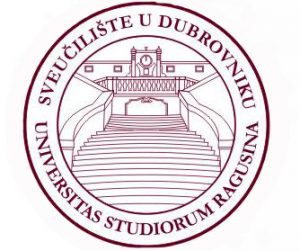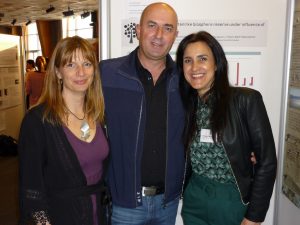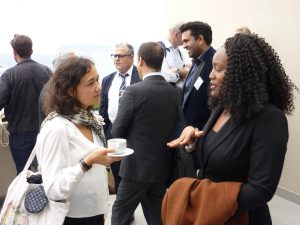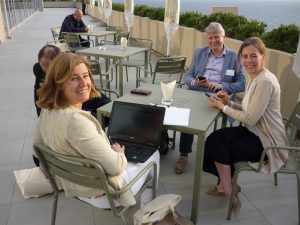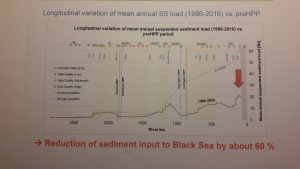Website: www.SedNet.org
Compiled by: Marjan Euser (marjan.euser@deltares.nl)
Subscription Service: SedNet Secretariat (marjan.euser@deltares.nl)
Disclaimer: SedNet is not responsible for faults due to incorrectness of info in this newsletter
Previous issues: www.sednet.org/newsletter
Contents:
- Looking back at the 11th International SedNet Conference
- 2nd Session SedNet Working Group Sediments in Circular Economy
- 3rd Session SedNet Working Group Sediment Quantity
- New SedNet WG on Sediment Management Concepts & Education-Science-Policy Interfacing
- Beneficial use of dredged sediments in road engineering
- Sediment management guidance in support of the WFD
- Emerging Contaminants
- Microplastics in sediments
- Dramatic decrease of sediment in Danube and Rhine
- Implementing Measures for Sustainable Estuaries
- Interreg EU Green Week
- Dredging for Sustainable Infrastructure
- Upcoming events
Looking back at the 11th International SedNet Conference
From 3-5 April 2019 the 11th International SedNet Conference “Sediment as a dynamic natural resource – from catchment to open sea” was held in Dubrovnik, Croatia. Co-organisers were Ruđer Bošković Institute and University of Dubrovnik, and IAEA participated too in the organisation.
164 sediment professionals from 34 countries participated to the miscellaneous Conference Sessions, Poster Sessions and Special Sessions. Abstracts and slides of most presentations can be found in the library.
Winners of the Poster Prizes are:
1st Prize:
Nieves García de Blas (IETcc-CSIC, Spain)
Three 2nd Prizes:
- Gisele Usanase (IMT Mines Alès, France)
- Anita Whitlock-Nybakk (Norwegian Geotechnical Institute)
- Thomas Hoffmann (Federal Institute of Hydrology – BfG, Germany)
The 12th International SedNet Conference will be held in 2021. We will keep you informed of the developments.
Photo impression SedNet Dubrovnik 2019:
More photo’s will be uploaded in the course of this summer.
2nd Session SedNet Working Group Sediments in Circular Economy
The 2nd session of the SedNet WG on Circular Economy and Sediments took place on 2 April, the day before the SedNet conference. It was followed by a short joint session with the WG Sediment Quantity. 22 participants attended the meeting.
WG CE activities include:
- Exchanges and open discussions on beneficial use options, sustainability (environmental, social and economic benefits), how to take into account external benefits in the economic balance, find different ways to answer the question ‘How to convince policy makers’ ? Beneficial use should not be a goal in itself but a substitute to primary materials extraction,
- Gathering information from other groups (CEDA, PIANC) and events (AquaConsoil), and cooperation opportunities,
- Submitting communication on good practice to the EU stakeholders platform on CE
- Supporting RTD initiatives, especially trying to include Sediments topics in incoming Horizon, ERDF and Life call texts, and favouring the constitution of partnerships,
- Connecting with SedNet “Sediment quantity” WG to exchange information and perspectives
Further topics will be addressed at the upcoming sessions of the WG.
- Preparing our own “white paper” but first consolidating knowledge on CE
- Preparing texts supporting RTD initiatives, especially trying to include sediments topics in incoming Horizon, ERDF and Life call texts
- Preparing texts conveying the message to policymakers: Valorisation should be facilitated by regulations
The next WG-meeting will be held at a place where beneficial uses of sediment are implemented (works, plant) or tested at the pilot scale. Preliminary date/venue: 23-24 October 2019, Bremen, Germany, with a site visit to Delfzijl, NL (Kleirijperij, see https://www.ecoshape.org/en/projects/clay-ripening-pilot-project/).
This meeting will have 3 separate subsessions to facilitate working on selected topics, and a shared wrap up. A list of possible topics will be circulated to the WG-members with the extended minutes. Participants are kindly requested to select their preference(s). Further topics can be proposed for WG4, planned for early 2020.
If you are interested in joining this WG, please send an email to the SedNet Secretariat and we will add you to the WG-mailing list.
3rd Session SedNet Working Group Sediment Quantity
SedNet WG Sediment Quantity had its 3rd meeting prior to the conference in Dubrovnik.
Progress was made on the production of several WG-documents and further actions were discussed.
If you wish to get involved in the WG, and would like to receive the minutes of the meeting, please contact the SedNet Secretariat.
In the Joint Session of WG Sediment Quantity and WG Sediments in Circular Economy at the end of the afternoon, it was concluded that there is a certain overlap between the subjects of sediment continuum and circular economy. For instance, dredging can be (part of) a measure to influence the sediment budget and continuum, but beneficial re-use of dredged sediments is certainly a circular economic action.
After presentations about the activities of both WGs there was room for discussion. An interesting point of discussion was the use of the idea of sustainability. From a sediment quantity viewpoint, sustainability addresses the restoration of sediment fluxes in order to keep the system as it is or restore former conditions. From a dredging point of view, sustainability pertains to minimizing impacts, coasts, etc. Someone suggested that using the phrase ‘beneficial use of sediment’ might prevent misunderstanding.
New SedNet WG on Sediment Management Concepts & Education-Science-Policy Interfacing
One of the conclusions from the SedNet Conference Session “Sediment Management Concept and Sediment Policy” is that there is a need to share experiences in this field and to develop a SMC Guidance Document. SedNet would like to facilitate this process and has the intention to start a thematic Working Group. Kick-off meeting will be on Wednesday 20 November, starting around noon, ending 21 November around noon. Venue: IETcc-CSIC in Madrid, Spain. If you are interested in getting involved, please contact the SedNet Secretariat.
Beneficial use of dredged sediments in road engineering
This Methodological Guide presents how dredged sediments can be beneficially used in road engineering with a view to sustainable development and to the protection of the environment and of populations. This is the result of research carried out by the Department of Civil and Environmental Engineering (DGCE) at the School of Mines of Douai for more than ten years on the theme of using dredged sediments. It is coherent with French regulations and the methodological framework (ADEME, 2010; SETRA, 2011) that prevailed at the time of the work. The proposed methodology was developed by the Ecole des Mines de Douai as part of France’s SEDIMATERIAUX project and may be reviewed in the light of feedback received at the French national or European level.
SedNet promotes since 2004 beneficial uses of dredged sediments, in a perspective of sustainable development and of circular economy. Road engineering is one of these beneficial uses, as it reduces both waste and mineral extraction.
This guide is not intended for use of sediments abstracted from a river system. It is only intended for harbour and canal dredgings, where restitution to river systems is usually not possible – at least economically.
Otherwise, it should be first considered to reintroduce them where the river system may need them, before considering any engineering use.
Sediment management guidance in support of the WFD
Preceding the 11th SedNet conference, on Monday 1 and Tuesday 2 April SedNet co-organized in Dubrovnik a sediment management workshop for and with the WFD CIS (Common Implementation Strategy) working group ECOSTAT (Ecological status). There were 45 participants from 16 European states and from Turkey. Outcome of the workshop was that the participants unanimously agreed to develop guidance on how sediment management can help to achieve the WFD as well as how this links to other EU policies (MSFD, MSPD, FD, CAP and Nature, Energy and Transport policies): sediment management is an issue that cross-cuts through all these policies, while the WFD (and MSFD and FD) is the core-policy. ECOSTAT takes the lead in developing the guidance and asked SedNet and national experts to bring in their expertise and experience.
Another ECOSTAT workshop conclusion was that sediment management is complex and thus we need to significantly invest in a better understanding of this complexity to be able to better inform river-sea managers and policy makers.
For more information contact Jos Brils
The report of the workshop is in prep., but the agenda and presentations are already publicly available at CIRCA website.
Emerging Contaminants
OVAM, the Public Waste Agency of Flanders, wishes to initiate an international multi-stakeholder network on Emerging Contaminants in Soil (EmConSoil), and more specific on the policy challenges of this theme.
The first focus of this network is on soil, but of course there is a very close relation with sediments. F.i. PFAS/PFOA is found in soils and sediments, and we need regulations to prevent that sediments, contaminated with PFAS/PFOA are reused as soil.
We all have to deal with the legacy of emerging contaminants, and as OVAM we really feel the urgent need for concerted actions and initiatives. It is clear that the problem cannot be solved by the regulatory authorities alone. In this network, OVAM aims to bring together policy makers, scientists, consultancies and problem owners.
EmConSoil will be an open network for all stakeholders from different sectors and countries. The aims are to exchange knowledge, to develop strategies and policies through co-creation, to raise awareness, and intensify collaboration between all stakeholders. This will be done by information sharing through a website, conferences, workshops, etc.
EmConSoil will work in close collaboration with other networks, like SedNet.
You can read more on https://www.ovamenglish.be/emconsoil and, if your organisation wishes to join this news network (it’s free!), do not hesitate to complete the registration form.
Microplastics in sediments
GESAMP (the UN inter-agency body ‘the Group of Experts in the Scientific Aspects of Marine Environmental Protection’ – www.gesamp.org) produced a couple of reports about microplastics in sediments:
- Sources, fate and effects of microplastics in the marine environment (Part 1)
- Sources, fate and effects of microplastics in the marine environment (Part 2)
- Guidelines for the monitoring and assessment of plastic litter in the oceans
Besides covering the design of monitoring and assessment programmes, monitoring methods for shorelines, the sea surface, water column, seafloor and marine biota, the latter report includes recommendations for:
- Definitions/terminology
- sampling methods
- sampling processing
- physico-chemical characterization
- analysis of chemicals associated with microplastics
- biological characterization
Dramatic decrease of sediment in Danube and Rhine
Dramatic sediment deficits have already been reported for e.g. the Mekong, Yellow River, Yangtze and Mississippi and their delta’s and coastal seas. However, very recent findings for the Danube and Rhine rivers show also dramatic figures for Europe: 60% reduction of suspended sediment input by the Danube to the Black Sea (Habersack, 2019) and 70% reduction of the suspended sediment load of the Rhine at is entry point in the Netherlands since 1952 (van der Perk et al., 2019). These figures (so for Rhine and Danube) only relate to suspended sediment, figures for bedload (gravel, sand, pebbles) are not yet readily available/insights/data are still hugely lacking. What are the impacts? We need to significantly advance the state-of-the-art in our integrated and holistic understanding of the societal, economic as well as ecological impacts resulting from a deficit of sediments in oceans, seas, coastal and inland waters. Hopefully Horizon Europe will provide a great opportunity for advancing of this understanding. Based on that understanding sustainable (nature-based) solutions can be proposed to restore and protect the flow of sediments from inland waters to seas and oceans in Europe as well as globally.
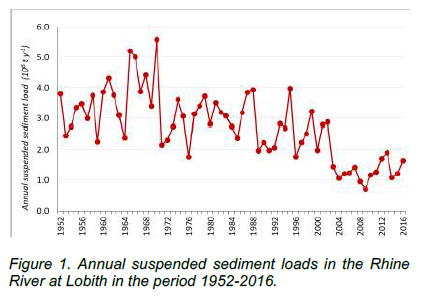
References:
- Habersack (2019) The importance of sediments for a sustainable Danube river basin management,
- Van der Perk et al. (2019) Examination of the declining trend in suspended sediment loads in the Rhine River in the period 1952-2016, see pages 73-74 in the Book of Abstracts of the 2019 NCR (Netherlands Centre for River studies) days
Implementing Measures for Sustainable Estuaries
IMMERSE, or “Implementing Measures for Sustainable Estuaries,” aims to accelerate the implementation of large-scale measures that address multiple estuary management challenges, while increasing their cost-efficiency and enhancing stakeholder commitment. More information is available on the project website.
In order to advance development and transfer of solutions across estuaries in the North Sea Region, IMMERSE is organizing its first Transnational Exchange Lab on 12 – 13 June, 2019 in Gothenburg, Sweden. The interactive workshop is designed to support the project’s objective of improving the quality of estuary management measures by drawing from transnational knowledge and experiences. The 1st Transnational Exchange Lab will focus on sediment management, including innovative treatment methods of contaminated sediments from the Port of Gothenburg, flood protection and governance issues. Please see the draft programme here.
At the Exchange Lab, IMMERSE partners, North Sea Region estuary managers and relevant stakeholders will explore solutions and share experiences through a variety of discussion formats. We invite SedNet members to join us at the Exchange Lab to share your experiences and expertise.
More information, including registration and travel information, is available on the event page.
Interreg EU Green Week
From 13-17 May 2019 the EU Green Week took place. Please find here a link to a special publication prepared for this event; there are a couple of sediment-related projects in it.
The purpose of the publication is to showcase a small sample of Interreg-funded projects that are putting EU environmental laws and policies into practice.
Dredging for Sustainable Infrastructure
CEDA-IADC recently published its book Dredging for Sustainable Infrastructure. The book gives state-of-the-art guidance on how to design, implement and manage a water infrastructure project with a dredging component in a sustainable manner.
Presented insights result from a wealth of up-to-date knowledge pooled by a team of scientists and practicing industry experts which was moderated by an Editorial Board comprised of CEDA and IADC representatives. Containing contributions from leading specialists in the field, the publication will serve as an authoritative guide to delivering dredging projects that enhance the natural and socio-economic systems.
Dredging for Sustainable Infrastructure is available for € 150 (excluding VAT and shipping costs). CEDA and IADC members get 25% discount.
Learn more about the book
Upcoming events
26-30 May 2019: 29th SETAC Europe Annual Meeting, Helsinki, Finland. Website
27-31 May 2019: Coastal Sediments ’19, Tampa/St. Pete, Florida, USA.
Conference theme “Advancing Science & Engineering for Resilient Coastal Systems”.
Optional Short Courses will be offered in full-day format on May 27, 2019.
Optional Technical Tours will be offered in full-and half-day formats on May 31, 2019.
Website
12-13 June 2019: 1st Knowledge exchange on sediment management – IMMERSE project, Gothenburg, Sweden. Website
17-20 June 2019: 17th EUROPE-INBO 2019 International Conference for the Implementation of the European Water Directives, Lahti, Finland. Website
29 July – 2 August 2019: Course Sediment Transport in Stream Assessment and Design, Logan, Utah, USA.
Website
12-16 August 2019: Introductory course Geomorphic and Ecological Fundamentals for River and Stream Restoration”, Truckee, California USA.
For further details here. Early-bird registration through 31 May; online registration form here.
9-13 September 2019: 34th IAS meeting of Sedimentology, Rome, Italy.
Many interesting sessions, for instance Session 10.7 “Managing Coastal Sediment”.
Deadline for submission of abstracts is 30 March 2019.
Website
16-19 September 2019: 14th International Symposium on River Sedimentation (14th ISRS), Chengdu, China. The Symposium will be held with the theme of “Integrated Sediment Management in Rivers and Coasts”.
Website
3-5 October 2019: International workshop Metrology for the Sea (MetroSea 2019), Genova, Italy. Website
20-24 October 2019: 22nd International Riversymposium on ‘Resilient Rivers’, Brisbane, Australia.
Website
23-24 October 2019: 3rd meeting SedNet Working Group Sediments in Circular Economy, incl. site visit. Bremen, Germany and Delfzijl, NL. Further info via SedNet Secretariat.
7-8 November 2019: CEDA Dredging Days 2019, Rotterdam, the Netherlands. Website
20-21 November 2019: Kick-off meeting SedNet WG on Sediment Management Concepts & Education-Science-Policy Interfacing, Madrid, Spain. If you wish to get involved please contact the SedNet Secretariat.
7-10 July 2020: RIVER FLOW 2020, Delft, The Netherlands.
10th Conference on Fluvial Hydraulics under the auspices of IAHR, with masterclasses on the 6th of July.
The deadline for abstract submission is 15 August 2019.
The conference themes include: sediment transport, sediment mining, climate adaptation, morphodynamics, ecosystem services etc.
Find updates or subscribe to the newsletter at http://www.riverflow2020.nl.
Disseminated by:
SedNet secretariat:
Mrs. Marjan Euser
Deltares
P.O. Box 85467
NL-3508 AL Utrecht
The Netherlands
Email marjan.euser@deltares.nl


